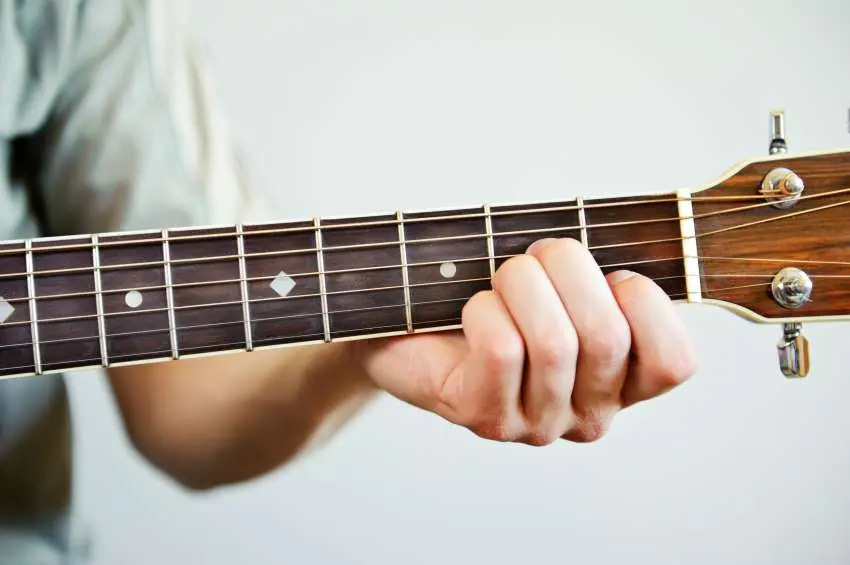
How to practice the guitar the right way
How to quickly learn to play the guitar
First of all, set yourself the goal of quickly learning how to play the guitar. The success of rapid guitar learning lies not in many hours of playing the instrument, but in the right approach and time management. It all depends on how your brain works and how you can make it work even more efficiently. It doesn’t matter if you’re learning simple chords or mastering virtuoso guitar passages, it all comes down to knowing how to do it right. The success of guitar playing cannot be entirely determined by some simple rules, but some minor things that are usually not paid much attention to can make a big difference to proper guitar practice.
Nine tips on how to practice the guitar the right way
1. The advantage of the morning hours plays a very important role. The mental freshness brought by sleep gives a great result in mastering new material. It would be great if you could develop the habit of playing for half an hour or even an hour before breakfast.
2. As for classes, do not study for more than one (maximum two) hours in a row, after which you will be distracted. Do something else and don’t think about music anymore. This method of “mental shutdown” is necessary so that the result achieved can ripen in your head unconsciously for yourself and be imprinted in your memory. The newly learned should lie down and imprinted like a photograph.
3. Playing the guitar is enough for four hours a day, provided that you want to achieve a high level. Every half an hour it is advisable to take a short break until you feel that you are rested. Five minutes is enough to rest.
4. There is another important condition for proper practice and quick learning on the guitar – make sure that you hear every sound you make, do not study purely mechanically, watching TV or having a dialogue in between. Try to play everything at a slow pace, otherwise the work you perform will simply “play” and will resemble a hackneyed vinyl record. Play ten times slowly and only once fast. Don’t try to play loud all the time to keep the experience consistent, otherwise your playing will be rough and uninteresting. By playing very quietly, you run the risk that the sound image in your brain will become clouded and the game will turn into an uncertain sound production. You should practice playing loud from time to time to develop physical endurance, but generally play with restrained force. Another of the conditions for how to practice the guitar correctly is the systematic practice. This is especially important for beginner guitarists who have not yet developed the habit of constancy and should pay special attention to this. Also, at first, it is advisable for beginner guitarists to play by the metronome in order to learn how to play smoothly and feel the rhythm and time. Daily practice is another criterion for success.
5. Now for the finger exercises. There is no need to play them too often and for too long. Half an hour a day is enough, but there is an even simpler and more effective way to warm up your hands before playing. Immerse your hands in warm water – after such a procedure, your hands will become warm and elastic. There is a small nuance – remember about the corns on your fingertips, it is quite possible that in your case you should not completely immerse your hands in warm water.
6. Now for the technical work. There is a good way to come up with exercises based on the pieces you play. There are always places in the works. which don’t work very well. The exercises constructed from these problem areas are very effective. Play them in different nuances, rhythms and tempos. This is what such great musicians as Liszt, Busoni, Godowsky did in their time. After playing such exercises, do not forget to play the whole piece later, as it is necessary that the corrected episode does not lose touch with the context. The editing of a corrected passage is best achieved with one bar before and after, then with two bars before and after, and so on.
7. In order to keep the maximum number of pieces in good technical condition in your memory, play the baggage of pieces you have accumulated one after the other several times a week, but never repeat the piece played twice. This will be quite enough to keep your repertoire in perfect condition.
8. Proper seating is very important, as the shoulders of the guitarist with such a fit remain free, which allows not to hinder the movement of the hands. Receiving a barre with the correct fit and positioning of the hand does not cause any particular difficulties.
9.Now a few words for those who play in front of an audience. When playing a new piece for the first time, don’t expect it to turn out great, don’t be surprised by unexpected little accidents. Until you have played the piece two or three times in public, there will always be surprises. The first thing that affects your performance is the acoustics of the hall. While you were playing sitting at home, you got used to certain acoustics and other acoustics do not add to your usual confidence. Your poor health or mood can also serve not to your advantage. It often happens that the audience is very cool about your performance. All these problems are surmountable, but the acoustic properties of the hall will remain with you until the end of your performance, so be prepared to keep your composure. Good luck!!!





